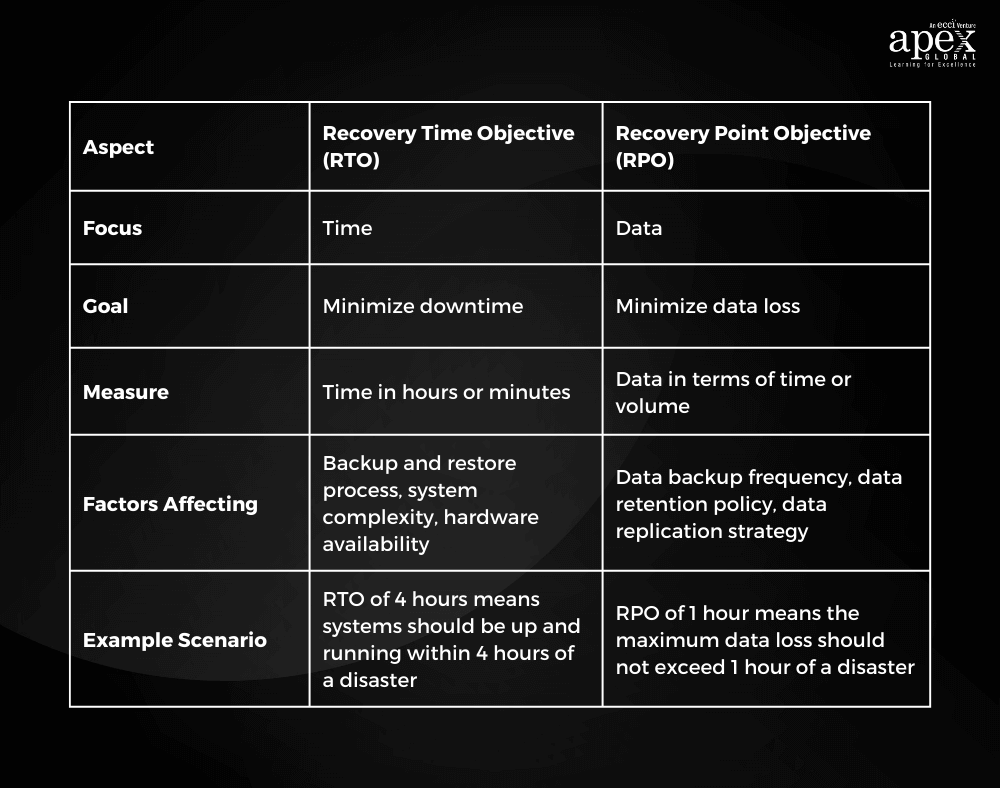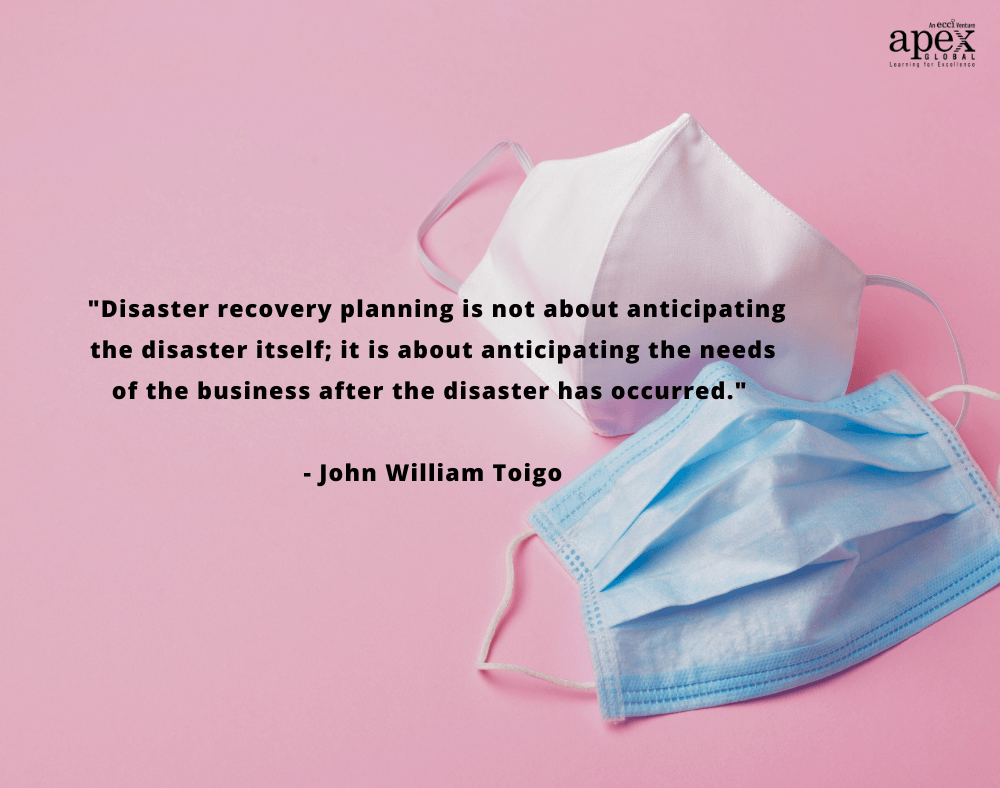The ominous threat of data hacking has become a sobering reality for major Filipino Government agencies.
The recent data hack exposed over 800 gigabytes of applicant and employee records from various state agencies in the Philippines. The affected list includes organizations that are tasked to keep our citizens safe like the Philippine National Police, National Bureau of Investigation, and Special Action Force. You heard it right; no one’s safe, not even the ones assigned to ensure the safety of citizens.
Looks like disaster recovery planning just got bumped to the top of the priority list!
The gravity of the situation is clear. It’s not just the big corporations that are susceptible to these kinds of cyber attacks. As an organization, disaster recovery planning is crucial for protecting your business from potential disasters like data breaches or natural disasters. Not to mention, having a solid disaster recovery plan can help minimize downtime and keep your business running smoothly.
What you'll find in this article [hide]
- 1 Defining Disaster Recovery- What is Disaster recovery planning
- 2 What is the purpose of a Disaster Recovery Plan?
- 3 The Ten Essential Elements of Disaster Recovery Planning
- 3.1 1. Business Impact Analysis
- 3.2 2. Risk Assessment
- 3.3 3. Recovery Strategy
- 3.4 4. Hardware and Software Inventory
- 3.5 5. Recovery Time Objective
- 3.6 6. Recovery Point Objective
- 3.7 7. Disaster Event Communications Plan
- 3.8 8. Staff and Business Continuity
- 3.9 9. Testing and Documentation
- 3.10 10. Disaster Recovery Drills
- 3.11 Why investing in professional training vital for your company’s disaster preparedness?
- 4 Conclusion
Defining Disaster Recovery- What is Disaster recovery planning
Are you disaster-proof? In today’s world, anything can happen at any time. This is where disaster recovery planning comes into play. In simple terms, disaster recovery is the process of getting back up and running after an unexpected disruption, whether it’s natural or man-made.
Here are three shocking statistics that should give you an idea of why disaster recovery planning is essential:
1. According to FEMA, 40-60% of small businesses do not reopen after a disaster.
2. The Ponemon Institute found that the average cost of data center downtime is around $9,000 per minute.
3. 58% of businesses fail to prepare for an unplanned interruption, according to the National Archives & Records Administration.
Disaster recovery planning involves creating strategies and procedures to help your business recover from natural disasters, including hurricanes, floods, power outages, pandemics, cyber-attacks, and other unexpected events that could disrupt your operations.
Developing a disaster recovery plan involves
- Identifying critical business functions
- Prioritizing recovery efforts
- Testing your plan regularly to ensure its effectiveness
Remember that disaster recovery planning is an ongoing process – it’s not enough to create a plan once and forget about it. Regular updates and testing are crucial to ensure that your plan will work when you need it most.

What is the purpose of a Disaster Recovery Plan?
As professionals, we all know the importance of having a plan in place for when things go wrong. But what’s the purpose of such a plan? Its aim is to help you restore business operations as quickly and efficiently as possible. It includes all the steps, tools, and procedures needed to safeguard your data, IT infrastructure, and overall business processes in the face of an unexpected crisis.
Minimizing Downtime – The main purpose of a disaster recovery plan is to minimize downtime in the event of a disaster, ensuring business continuity.
Cost Reduction – Having a plan in place can actually reduce the costs associated with recovering from a disaster by avoiding unnecessary expenses and delays.
Reputation Management – A well-executed disaster recovery plan can help maintain your company’s reputation by showing your customers that you’re prepared and committed to keeping their data safe.
Legal Compliance – Depending on your industry and location, there may be legal requirements for disaster recovery planning to ensure compliance with regulations and data protection laws.
Identifying Weaknesses – The process of creating a disaster recovery plan can also help identify potential weaknesses in your IT systems and processes, allowing you to address them proactively.
Employee Safety – While the focus of disaster recovery planning is often on technology, it’s also important to consider the safety of your employees and have protocols in place to ensure their well-being.
Peace of Mind – Ultimately, the purpose of a disaster recovery plan is to provide peace of mind for everyone involved, from employees to stakeholders and customers. Knowing that you have a plan in place can help reduce stress and anxiety in the face of potential disasters.
In short, it’s like an insurance policy for your company. So, take some time to review your disaster recovery plan, ensure it’s up-to-date, and test it regularly.
The Ten Essential Elements of Disaster Recovery Planning
Let’s face it, disasters happen. And when they do, the impact on your business can be catastrophic. That’s why no matter what industry you’re in, disaster recovery planning is an essential aspect of protecting your business. Here are 10 crucial elements to consider when creating your plan:
1. Business Impact Analysis
Business Impact Analysis helps you identify the potential risks and impact on your business operations during disasters. It ensures that your business can continue operations despite disruptions.
If you haven’t yet, start incorporating BIA in your disaster recovery plan and safeguard your business operations! Here’s how:
- Start with your data: Determine which data is essential to your business operations and prioritize accordingly.
- Determine your Recovery Time Objectives (RTOs): How quickly do you need to recover after a disruption? This will help you determine the criticality of different systems and data.
- Calculate the cost of downtime: Knowing how much revenue is lost per hour of downtime can help prioritize which systems and data to recover first.
- Involve stakeholders: Involve key stakeholders across your organization in the BIA process to ensure everyone is on the same page and priorities are aligned.
- Review and update regularly: As your business evolves and changes, so should your BIA. Regular reviews and updates can help ensure your disaster recovery plan remains effective.
2. Risk Assessment
A well-crafted disaster recovery plan involves identifying potential risks, creating policies and procedures to minimize or mitigate them, and implementing contingency plans to reduce downtime and prevent further damage.
Risk assessment is a crucial component of disaster recovery planning, but it doesn’t have to be overwhelming. Here are some practical tips to help you navigate this process:
- Start by identifying potential risks and threats.
- Evaluate the potential impact of each risk on your organization, including financial and operational implications.
- Prioritize the risks based on their likelihood and potential impact.
- Conduct regular reviews and updates to ensure that your risk assessment remains relevant and up-to-date.
- Develop contingency plans and procedures to mitigate the impact of potential risks.
3. Recovery Strategy
A solid recovery strategy should be well thought-out and prepared ahead of time, and cover every possible scenario that may arise.
Here are some tips on how to handle this element:
- Document Your Plan: Ensure that all necessary parties have access to the plan.
- Identify Your Priorities: Determine which systems and data are critical to your business and prioritize their recovery in case of disaster.
- Assign Roles and Responsibilities: Clearly, define who will be responsible for executing different aspects of the recovery plan and communicate these roles to everyone involved.
- Collaborate with Partners: Ensure that your plan takes into account any dependencies on third-party providers or other partners and works collaboratively with them.
4. Hardware and Software Inventory
Having an accurate inventory can save you big time in the event of an unforeseen crisis.
For starters, it helps you determine which resources are crucial for your business operations and needs to be recovered first. Secondly, it streamlines the process of replacing damaged equipment and software, which means faster recovery times and minimized downtime.
Here are some tips for managing this important component:
- Have an easily accessible document that details your hardware and software assets.
- Ensure your inventory is accurate by regularly auditing and updating it.
- Focus on the critical items first, such as servers and important software, before moving on to less critical items.
- Store receipts and invoices, warranty information, and any other important documentation in case of loss or damage.
- Consider Using an Asset Management Software
- Ensure your inventory document and any associated documentation is kept in a secure location, both physically and digitally.
Key tip – Conducting regular checks to ensure your inventory is accurate and up-to-date can have benefits outside of disaster planning as well. This can help you identify outdated or unused assets that can be retired or repurposed.
For example consider this scenario: A multinational company might use an automated inventory tool that allows them to track all their hardware and software assets across multiple locations. They regularly audit their inventory and end up discovering that they were paying for licenses they no longer needed, resulting in significant cost savings.
5. Recovery Time Objective
What is the recovery time objective (RTO) when it comes to your disaster recovery plan? It’s the amount of time you can afford to be without access to critical systems and data. This objective should be established during the initial planning phase, as it will help determine the level of resources and efforts required to restore normal operations in case of an outage.
Here’s how to incorporate RTO into your strategy:
- Define your RTO- Determine how much downtime your organization can handle before it starts to impact operations. For example, if your RTO is four hours, then you need to have your systems back up and running within four hours of the disaster occurring.
- Prioritize critical applications-Identify which applications are essential for business continuity and focus on recovering those first to meet your RTO. For example, if you’re an e-commerce company, your website is likely one of your most critical applications and should be prioritized accordingly.
- Test your recovery plan-Regularly test your disaster recovery plan to ensure that it can meet your RTO. Conducting a simulated disaster scenario can help identify any gaps in your plan that need to be addressed.
6. Recovery Point Objective
In simple terms, Recovery Point Objective (RPO) is the amount of data that you can afford to lose in the event of a disaster.
Think of it like this: If you were hit with a major outage or disaster, how much data can you afford to lose? Is it minutes, hours, or days of data? That’s your RPO.
Determining your RPO is crucial for planning your disaster recovery strategy. It helps you prioritize backups and data replication so that you can get back up and running as quickly as possible.
Make sure your disaster recovery plan includes your RPO. This will ensure you have backups and recovery plans in place to meet your objectives.
Key Tip: Choose the Right Backup Strategy. A common backup strategy is the 3-2-1 rule. Keep 3 copies of your data on 2 different types of media with 1 copy off-site. This will help you ensure you can meet your RPO in case of disaster.
Example: Let’s say you have an RPO of one hour. You’re backing up your data every hour, but your backups are all on-site. In case of disaster, you may lose all your backups and fail to meet your RPO. Incorporating off-site backups into your disaster recovery plan will help ensure you can meet your objectives.

7. Disaster Event Communications Plan
A disaster event communications plan helps businesses communicate with their employees, customers, and other stakeholders during crisis situations. Whether it’s natural disasters, power outages, or cyberattacks, having a solid communications plan can help mitigate confusion and provide clarity. It’s time to make sure your disaster recovery plan is truly comprehensive – including your Disaster Event Communications Plan.
Here’s a step-by-step that covers all critical bases.
Step 1: Identify all possible communication channels, such as phone, email, and social media.
Step 2: Designate an internal communications team and clearly define roles and responsibilities.
Key Tip: Use pre-written templates to quickly respond to inquiries. For example, create an email template that acknowledges the event and assures stakeholders that the company is working to resolve the issue.
Example: During Hurricane Katrina, FEMA had pre-written messages ready to go for various stakeholders, including the public, media, and government officials. This allowed for quick and efficient communication during an extremely stressful situation.
Step 3: Consider all stakeholders and how they may be affected, such as customers, employees, and shareholders.
Step 4: Don’t forget to communicate your plan to all employees and stakeholders. It’s essential that everyone knows what to do in case of an emergency.
Example: If there is a cyber-attack, having clear instructions on how to report incidents to IT and security teams will save valuable time and mitigate potential damages.
Step 5: Test your plan regularly to ensure it’s effective and make adjustments as needed.
8. Staff and Business Continuity
When disaster strikes, your staff needs to know how to respond, what to do, and who to contact.
By creating a plan that addresses both staff and business continuity, you can ensure that your organization will be able to quickly recover and resume operations following a disaster. Plus, it helps maintain morale and reduce stress on your employees knowing that they have a plan in place.
- Define roles and responsibilities: Clearly define who is responsible for what tasks during a crisis. For example, in the event of an IT outage, designate someone to communicate updates to staff and customers while another person works on restoring systems.
- Cross-train staff: Ensure that multiple team members can perform essential tasks so that operations can continue if someone is absent or unable to work during a crisis. For instance, if your finance manager is unable to work due to illness, another team member should be able to step in and manage financial tasks.
- Establish partnerships: Establish partnerships with vendors or service providers that can support your business during a crisis. For instance, if your primary shipping partner experiences disruptions, having an alternate shipping partner in place can ensure that your business can continue to deliver products to customers.
9. Testing and Documentation
Testing and documentation are often overlooked in disaster recovery planning, but they are crucial components for successful recovery. Here are some tips on how to incorporate them:
- Start by identifying critical processes and applications that must be restored quickly in case of a disaster.
- Develop and document test plans to ensure that the recovery process works as intended.
- Conduct regular testing of the disaster recovery plan to identify gaps and make necessary improvements.
Key Tip: When documenting the disaster recovery plan, be sure to include all necessary details, such as contact information for key personnel, system configurations, and backup schedules. For example, in the event of a system outage, having the contact information readily available for your IT support team can greatly reduce downtime and potential losses.

10. Disaster Recovery Drills
Disaster Recovery Drills are exercises designed to test the readiness and effectiveness of your organization’s disaster recovery plan. Not only do they help identify any weaknesses or gaps, but they also ensure that all employees are familiar with their roles and responsibilities during a crisis. Trust us, these drills are worth the time and effort!
Here’s how to incorporate them:
Conduct Regular Drills: Regular disaster recovery drills can help you identify gaps in your plan, update it, and improve the effectiveness of the recovery plan.
Assign Roles and Responsibilities: Identify key personnel, assign roles, and develop specific tasks and responsibilities in the event of an actual disaster.
Test your Plan Against Real-Life Scenarios: Testing your disaster recovery plan with real-life scenarios can help identify and fix potential issues in your plan.
Key Tip: Create Different Scenarios and Drills: Consider creating drills based on different disaster scenarios like cyber-attacks, natural disasters, or pandemics. For example, run simulations to prepare for floods or hurricanes, run software updates, or consider third-party support.
Why investing in professional training vital for your company’s disaster preparedness?
As the saying goes, an ounce of prevention is worth a pound of cure. And that couldn’t be more true when it comes to disaster preparedness for your company. Professional training programs equip you with the necessary knowledge and skills to effectively manage risks and handle disasters, ensuring that your business is well-prepared to weather any storm.
APEX Global Learning’s Disaster Recovery Practitioner course covers everything from disaster recovery concepts to practical strategies and best practices, giving you the peace of mind you need to run your business. This ensures that your team receives a thorough and practical understanding of disaster recovery, enabling them to develop effective strategies for your company’s specific needs.
Led by industry experts, this course offers practical knowledge and insights that you can put to use right away. The course includes practical tools, templates, and resources that can be used to develop and implement effective disaster recovery plans for your company. These resources can serve as valuable references and guides in your ongoing disaster preparedness efforts.
Trust us, it’s an investment you won’t regret.
Conclusion
As we wrap things up, let us leave you with one final thought from one of our personal heroes: ‘By failing to prepare, you are preparing to fail.’ – Benjamin Franklin.
Disasters can strike at any time, and it’s important to have measures in place to safeguard your company. We cannot emphasize enough the importance of having a disaster recovery plan and keeping it up-to-date.
Don’t wait until it’s too late. Be proactive and ensure that your company is ready for any curveball life throws your way. From conducting regular audits to keeping that dusty emergency contact list up to date, these tips will help you sleep easy knowing your business can handle the worst of the worst.


